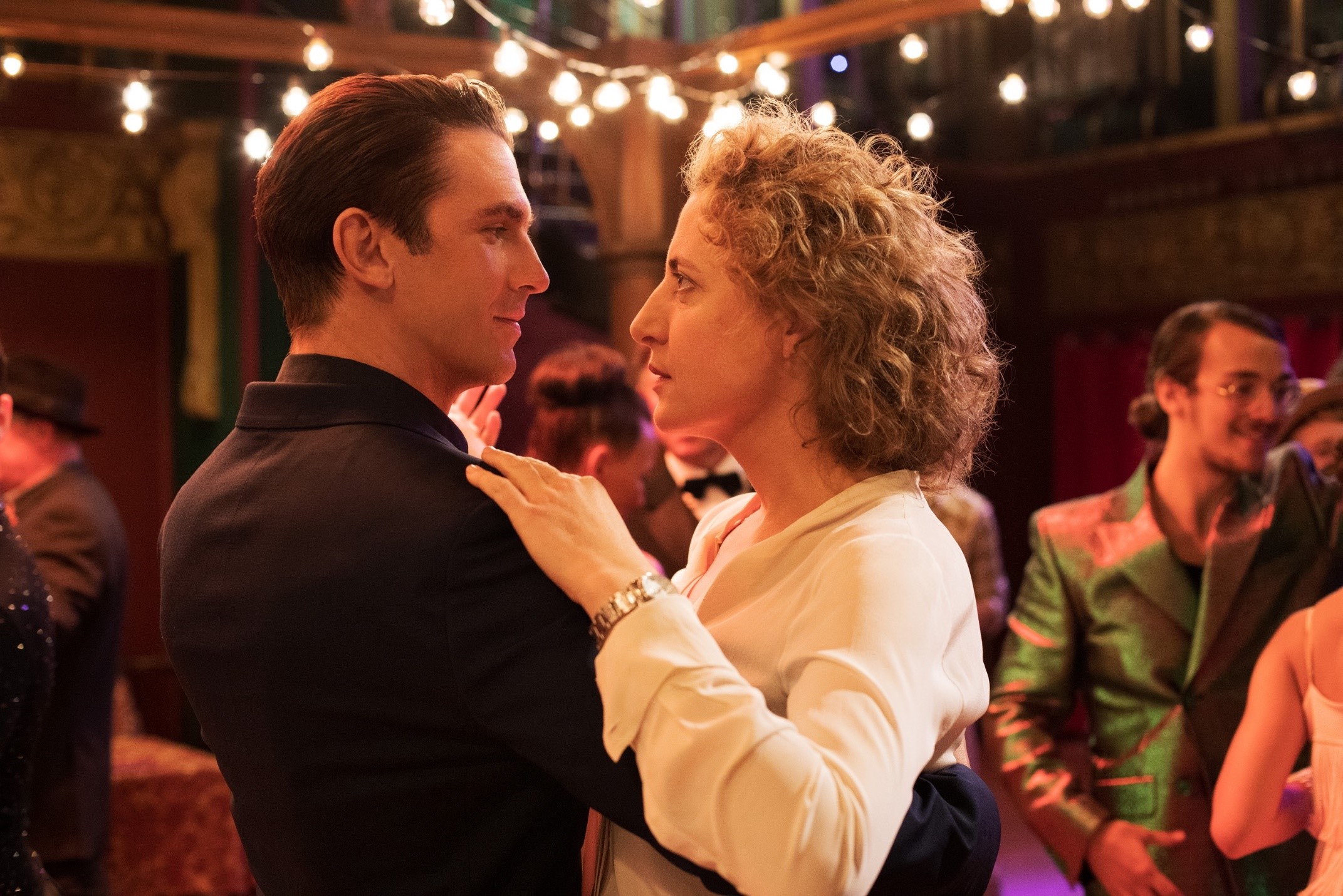A Festival without Festivities: The 71st Berlin Film Festival
Skip other details (including permanent urls, DOI, citation information)
: This work is licensed under a Creative Commons Attribution-NonCommercial-NoDerivatives 4.0 International License. Please contact [email protected] to use this work in a way not covered by the license.
For more information, read Michigan Publishing's access and usage policy.
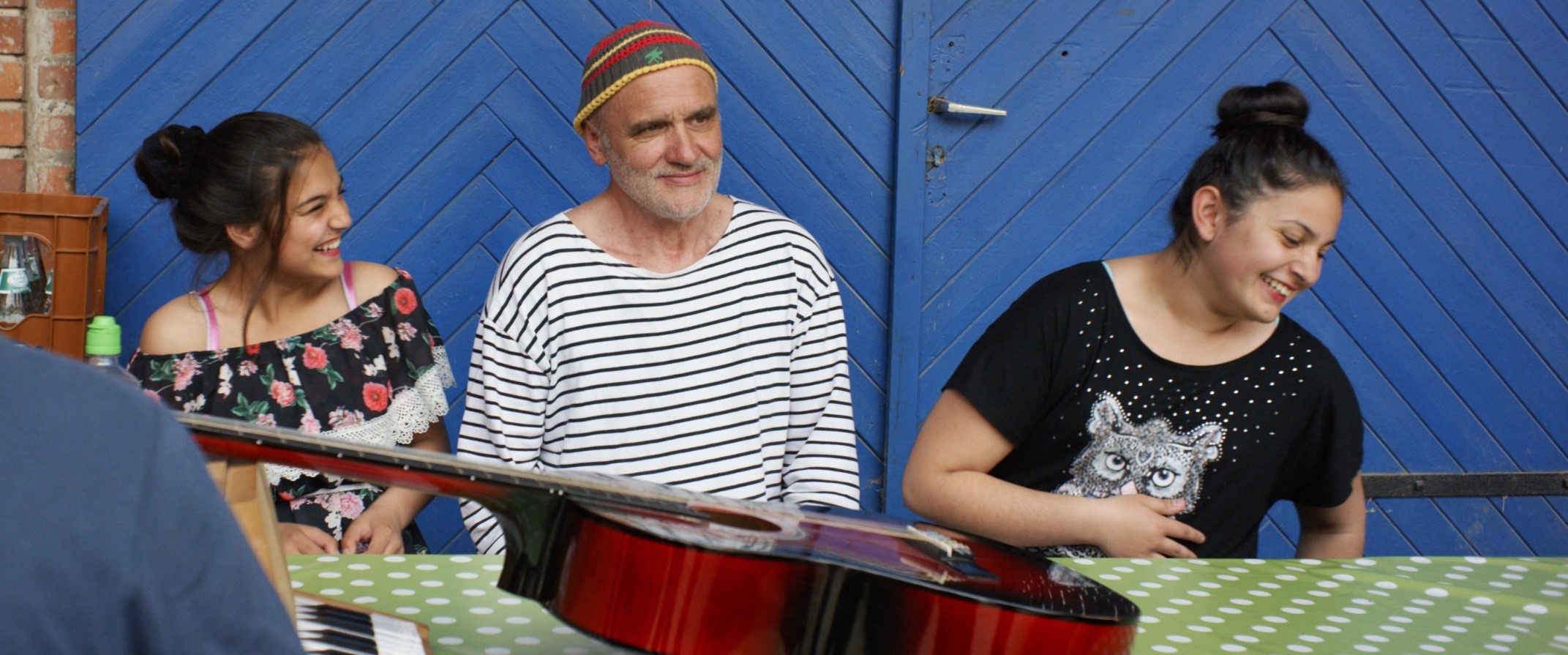
The 2020 Berlinale was the last big film festival to date that was able to take place as originally planned, in front of live audiences and with plenty of international guests. But even at that time, the ominous threat of a quickly spreading virus had stopped some foreign visitors from attending, and I remember how a coughing spectator in the last row made an entire audience nervously crane their necks. Exactly ten days after the final screening, the whole city of Berlin, and much of the world, went into complete lockdown, and the experience of film and cinema has not been the same since.
Over the last twelve months, festivals big and small have come up with their own ways of dealing with closed cinemas and travel bans. While Venice was able to squeeze in a small-scale live festival, most others have experimented with a mixture of online offerings and reduced in-person events (relying on drive-in theaters in New York, for example); the Berlinale, in turn, decided last November to split the format into two tracks: an online virtual festival, which just wrapped, with access reserved to industry representatives and journalists; and a live event for local audiences scheduled for June (or so we hope). This so-called Berlinale Summer Special will bring its films to neighborhood theaters and outdoor venues, and instead of just the Berlinale Palast the entire city will roll out the red carpet for the stars. When asked whether there was an alternative to this scenario, should further precautionary measures not allow it, Executive Director Mariette Rissenbeck explained, “The current scenario is our Plan B. There is no Plan C.” And while “this two-part festival will not be the best Berlinale,” as Artistic Director Carlo Chatrian conceded, “it will be the best under the circumstances.”
And indeed, the overall programming, and the Competition in particular, presented an impressive selection, providing vivid testimony that, while public life remains at a near standstill almost everywhere, the lack of contact with live audiences has not slowed down filmmakers’ creative impulses. (From the 2021 slate, only two titles overlapped with Sundance, a clear indication how much more good cinema is lying in the wings for us, once the theaters open again.) In contrast to recent years, the Competition featured only world premieres and no English-language entries. With films from Romania, Hungary, and Georgia, however, Eastern Europe enjoyed a strong representation, heightened by the presence of Adina Pintilie (Romania), Ildikó Enyedi (Hungary), and Jasmila Žbanić (Bosnia) on the international jury. They were joined by Gianfranco Rosi (Italy), Mohammad Rasoulof (Iran), and Nadav Lapid (Israel)—all of them former Golden Bear winners.
This year, that Bear went to Babardeală a cu bucluc sau prono balamuc/Bad Luck Banging or Loony Porn by Radu Jude, a former Silver Bear winner for Aferim! in 2015. The new film revolves around a school teacher who has to deal with the fallout from her home-made porn video’s going viral due to her husband’s carelessness. Jude’s film was one of few that shows us not only tangible signs of the pandemic (there are masks in all forms of wearing or not wearing them), but also how polarized and frenzied society has become in lockdown. Following a two-minute opening sequence of graphic porn, the film is divided into three distinctive parts: in the first, we watch the protagonist roaming the noisy and dirty streets of Bucharest, clearly symbolizing a larger moral decay; in a starkly different tone, the middle part bombards viewers with bite-sized snapshots of Romanian society at its ugliest and most chauvinist—archival footage of military parades and children singing war songs, mixed with a collage of quotes denigrating women or promoting xenophobia; in the final part, the teacher has to face a tribunal of parents who will decide whether she can remain in her job or not, and where hypocrisy, misogyny, and anti-Semitism erupt in full force. A brash and messy film intended as social satire, Bad Luck Banging was praised for mixing different tonalities, but I felt that the director became complicit in, rather than critical of, the social-media driven nastiness that his film depicts. It is a film that makes you take notice, but hardly a memorable one.
A very different schoolteacher is at the center of a very different film—Maria Speth’s immersive three-and-a-half-hour documentary Herr Bachmann und seine Klasse/Mr. Bachmann and His Class, which won the Silver Bear Jury Prize. As the Jury’s statement put it, “Always keeping the right distance, the film focuses on one of those ‘field workers’ of our society who defines the most formative years of our children, influencing deeply their attitude towards life. As seen through the eyes of the director, this teacher is unique: he reshapes, softens, and makes more human, and through that humanity makes much more efficient a system in crisis — our European educational system.”[1] Yet the crisis of that system is mostly implied, as the film focusses squarely on the charismatic Bachmann and his interaction with his 18 students, most of them children of migrants coming from Morocco, Bulgaria, Turkey or Russia at various stages of language competency and integration into German society. In the classroom, he models listening, paying attention and being respectful. Rather than fostering competition, he instills in them the need for solidarity, encouraging those who are better in a certain subject to tutor those in need. Covering the curriculum is not his primary concern. Teaching compassion is what really matters, and for that Herr Bachmann channels Jack Black from School of Rock, not only because both share a passion for classic rock—Bachmann even plays “Stairway to Heaven” with his students—but because both know that music is uniquely suited to the creation of a sense of community and belonging.
Bachmann teaches sixth graders, the year in which the German educational system splits students up into three different tracks that will often determine their future professions and places in society. Herr Bachmann is well aware of that crucial crossroads; when he presents them with their final report card, he reminds them, “This is not you, this is only a snapshot assessment,” so as to encourage to keep pushing themselves, regardless of which school they are placed into. Maria Speth followed the class for over a year, during which time the camera’s presence eventually went completely unnoticed. The assembled material displays a wonderful sense of rhythm and timing, bringing to mind the documentary practice of Frederic Wiseman. Like Wiseman, Speth also provides a context in which to situate her subject matter. Viewing one educational film, the students learn about West Germany’s guest workers program of the 1960s, when thousands of workers from Southern Europe and Turkey were brought to Germany to alleviate labor shortages. Their stay was meant to be temporary, and no provisions were made for their real integration, but many remained in Germany, living in ghetto-like housing and without a basic infrastructure to serve their children’s educational needs—past shortcomings that still impact Bachmann’s students to this day. From time to time the camera leaves the classroom, exploring the town and its diverse neighborhoods. During one excursion, students are taken to the site of a former Nazi labor camp, where men and women who were captured in the East were forced to produce bombs and ammunition. The historical parallels between foreign labor now and then are not lost on the students, especially since several of the local companies involved in the 1930s militarization efforts are the same ones that today employ their parents. At some point, Herr Bachmann reveals his own family’s background: in the late 1930s, the Nazis made his Polish grandparents shed their name and become the Bachmann family. If you dig down a little, this anecdote suggests, we’re all migrants of some sort or other.
Speth’s documentary was one of four German films in the Competition, next to Fabian oder Der Gang vor die Hunde/Fabian—Going to the Dogs, Dominik Graf’s adaptation of a novel by Erich Kästner, and Daniel Brühl’s directorial debut Nebenan/Next Door, a two-hander with Brühl and Peter Kurth, based on a script by Daniel Kehlmann (neither film was made available for online viewing); and Maria Schrader’s Ich bin dein Mensch/I’m Your Man, starring Maren Eggert and Dan Stevens, with Sandra Hüller and Hans Löw in supporting roles.[2] Still best-known as an actor, Schrader by now boasts several impressive credits as director, including the feature Stefan Zweig: Farewell to Europe and the recent Primetime Emmy winner Unorthodox, a Netflix production. Those who know Eggert primarily from her work with Angela Schanelec will here discover her talent as comedian, for which she received a Silver Bear for Best Leading Performance (as of this year, this Bear is no longer awarded according to gender). Stevens, of Downton Abbey fame, gets to adapt his role as romantic lover but with a slightly mechanical delivery as blue-eyed humanoid robot Tom, designed to be a perfect match for Alma (Eggert). A research scientist at the Pergamon Museum Alma has reluctantly agreed to assess the android’s programming in return for funding for her projects. Alma and Tom are first introduced to each other through a unique meet-cute in a swank nightclub, where Tom recommends a Bordeaux and compares Alma’s eyes to two mountain lakes. Befuddled by the clichéd come-on she quizzes him, “what’s 3587 times 982, divided by 731,” to which he replies a split-second later, “4818.65116.” Tom’s subsequent banal ploys to please include a candle-lit bath with rose petals and home-made pancakes, but like any well-tuned algorithm, he quickly learns from responses and begins to evolve into the kind of character that the skeptical Alma slowly appreciates. In the process, Tom becomes more complex and less predictable, as does the film, posing profound questions about life, love and the ethics of AI, while never losing a light touch and the ability to surprise—a robot-rom-com that pleases both the left and the right side of the brain.
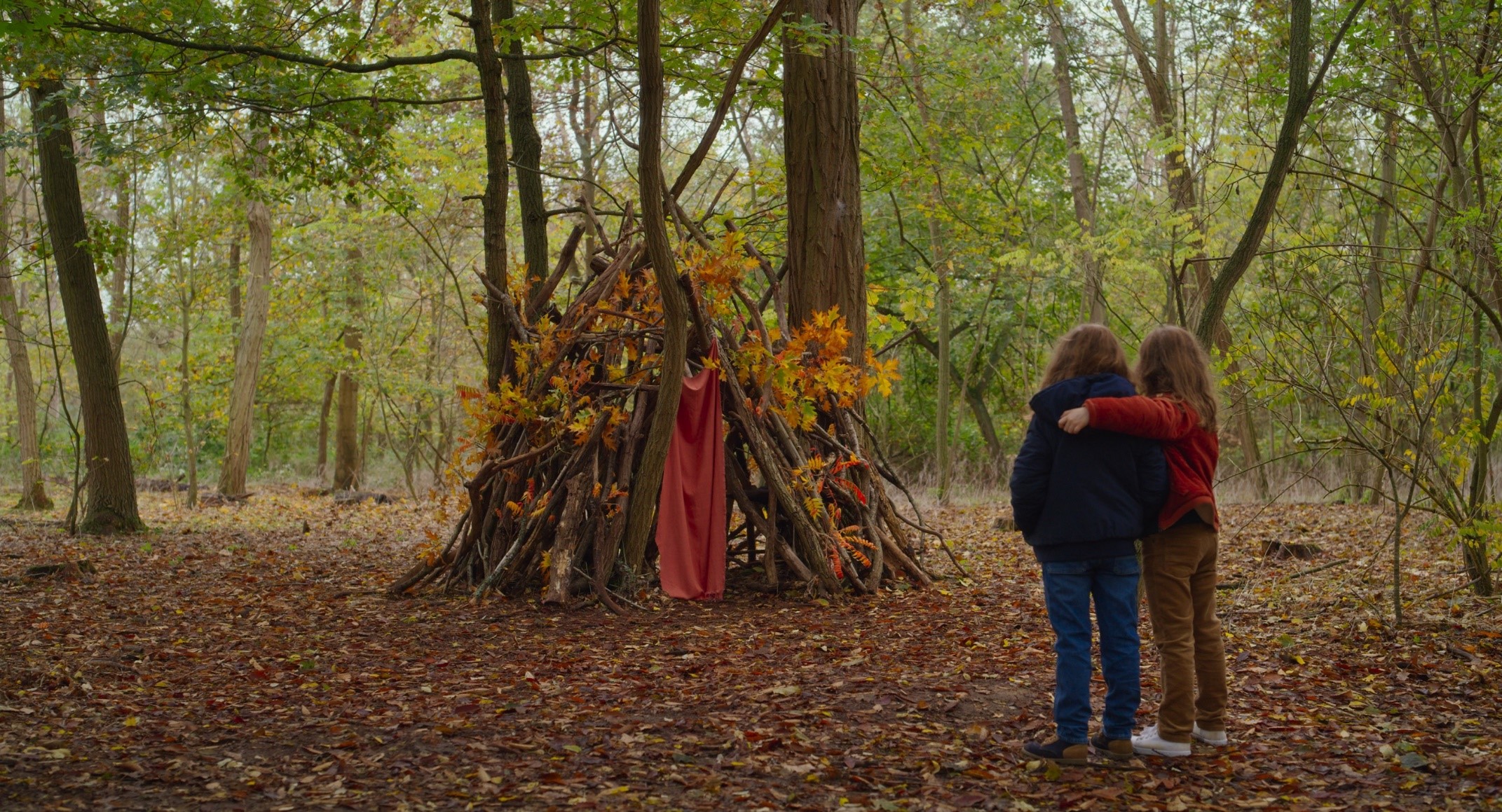
My festival favorite, however, wasCéline Sciamma’s Petite Maman, the director’s second participation at the Berlinale, after Tomboy won the Teddy Award in 2011. Like many productions this year, Petite Maman was made entirely under Covid restrictions, with filming beginning only in November. And like several others from this year’s slate, it evokes the experience of the pandemic in indirect but palpable ways. Take the opening sequence, in which eight-year-old Nelly bids farewell to residents in a nursing home, where her grandmother has just died—an all-too-common event during recent months; and like so many, Nellie laments to her mother, Marion, about not having been able to properly say good-bye to a loved one.
Marion is tasked with clearing out her mother’s belongings from their childhood home in the countryside while Nelly gets to explore the places of her mother’s youth, especially a leafy forest where her mother once built a treehouse—and where Nelly runs into a girl her age named Marion, who looks just like her. From there, a magical exploration sets in about what one generation transmits to another, with a central twist that cannot be revealed here. Asked about how she achieved the emotional impact of Petite Maman, Sciamma explained, “I write in a viewer-driven way, rather than a character-driven way,” adding that, while she had had the idea for this film for a long time, “it was made at a moment when we felt that cinema was in danger.” With works like these, that fear seems unwarranted. Coming off the success of Portrait of a Lady on Fire, Petite Maman is a small film—a cast of five; one main indoor location (rebuilt in the studio); and a running-time of barely 70 minutes—but at the same time it is huge. Sciamma’s work with eight-year-old twins Joséphine and Gabrielle Sanz was particularly revealing. “Since children have a shorter attention span,” the director explained, “we had to limit our work with them to three hours per day.” This implied that everything on the set had to perfectly prepared when her young actors arrived, and there was no time for lengthy rehearsals. “Once they understood what I wanted,” Sciamma added, “it became very easy and natural to work with them.” Immediately after its Berlin premiere, Neon bought the rights for North American distribution, which means Petite Maman will come to a theater near you—which is the place where this autumnal, magical tale ought to be seen.
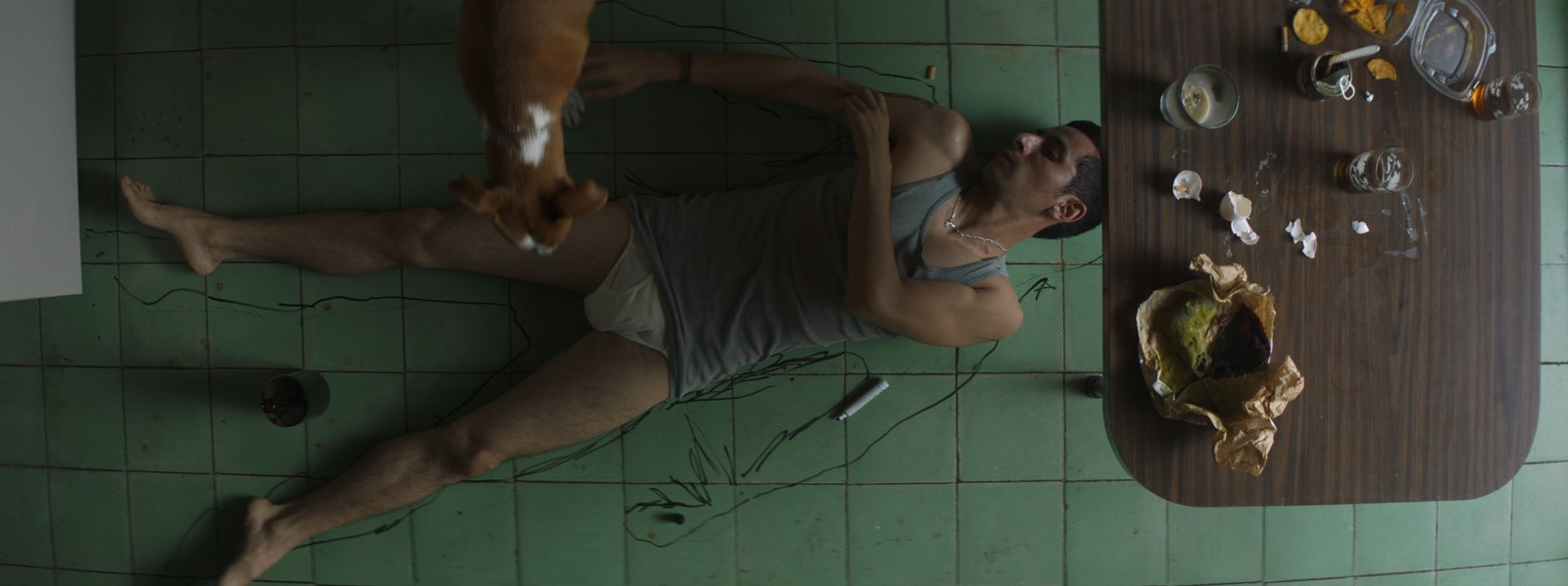
The strong Competition was rounded out by Alonso Ruizpalacios’s Una pelicula de policías/A Cop Movie, a highly originally mix of fiction, documentary, and mockumentary that explores Mexico City’s infamous police. With Güeros (2014) and the Silver Bear winner Museo/Museum from 2018 to his credit, Ruizpalacios is a regular at the Berlinale. His amazing range is further on display in two episodes that he directed for Narcos: Mexico (both 2018). In this new film with a deceptively simple title, actors Mónica del Carmen and Raúl Briones play Teresa and Montoya, two cops at work in Mexico’s capital. When we witness Teresa reacting to a 911 call, during which she ends up delivering a baby, we are clearly in the throes of a suspense-driven and carefully scripted scenario. Yet later we realize that she is an actor who is undercover as she participates in the training of actual new recruits, apparently recorded by candid camera. But then things take yet another turn. And as twists are added, Ruizpalacios asks ever more radically, What does being a cop mean if not playing a role? That A Cop Movie is a Netflix production would have raised eyebrows in Berlin not too long ago, but during a festival of exclusive online delivery, nobody cared to comment. It will be interesting to see how a Netflix audience that is expecting a regular cop show will react to this kind of intellectual contraband: “Since you liked Narcos, you may also enjoy A Cop Movie.” Ha! The footage of that reaction might be almost as entertaining as Ruizpalacios’s clever play with genre.
While Jude, Speth, Sciamma and Ruizpalacios have been at the Berlinale before, they do not (yet) come close to being the kind of veteran of the festival that Monika Treut is. In her latest documentary, Genderation, the Hamburg-based filmmaker catches up with the protagonists of her 1999 Gendernauts, a pioneering portrait of San Francisco’s transgender movement featuring Sandy Stone, Susan Stryker, Max Wolf Valerio and the fabulous Annie Sprinkle. This follow-up is a taking stock not only of how these same individuals have developed in the last two decades, but also how U.S. discourse around transgender identities has changed, particularly during the repressive Trump years. The fight for recognition and acceptance still continues, but a younger generation has joined the cause and pays respect to these pioneers. Still, questions about who one is, or is taken for, still persist. For Sprinkle, gender identities are now intimately tied to questions of ecology, climate change and sustainability, as she explains at a workshop at Documenta Kassel. Later she quips, “I feel like a whale trapped in a woman’s body,” revealing how her own sense of being in the world has evolved. On a more dour note, Genderation chronicles how gentrified San Francisco, where most of Treut’s protagonists resided in 1999, has become no longer an affordable option, driving them to more rural places and even the Mojave desert.
A very different kind of sexuality is on display in Death of a Virgin, and the Sin of Not Living, George Peter Barbari’s moving debut feature. In it, four teenage friends living in Northern Lebanon set out to lose their virginity by visiting a prostitute, a trip accompanied by a constant banter of testosterone-driven bravado and macho one-upmanship. While that routine is still a common rite of passage in many societies, Barbari’s film takes an unexpected look at male adolescence that emphasizes introspection and insecurity. Much of the film’s trajectory is taken up by following the young men as they nervously and expectantly make their way to their scheduled appointment, with stops to get condoms, beer and ice-cream. Yet frequently the story is arrested by interior monologues that reveal the characters’ true feelings and foretell their future, including that of other people the boys meet by accident—think Alfonso Cuaron’s Y tu mamá también, but told from a first-person perspective rather than through an omniscient view.
The film opens on Etienne and his buddy Adan as they watch porn on their phone to get into the mood. The camera then roams Etienne’s apartment to catch up with his mother, who is busy preparing a meal. When the boys depart, her interior monologue sets in, and we learn that she is still reeling from her husband’s death in a plane crash a year ago. “I wish he had loved me a little less,” she confides, revealing a loss she cannot overcome. Etienne’s sister, in turns, admits to having had an abortion several months before without telling anyone. “I will die at 87,” she states, which would sound fulfilling had we not just gleaned her true state of despair. Life is precarious and fragile, the film tells us; that may come as a surprise, given the film’s narrative conceit, but it shouldn’t if we consider that its title contains the words ‘death’ and ‘not living.’ The interior monologues reveal much about Lebanese society, including homophobia and prevailing double standards regarding male and female sexuality (for instance, that women are expected to enter into marriage as virgins, but men are not). A monologue by a man who gives the boys a ride discloses that in two years he’ll sleep with another man and for the first time in his life will feel free. The film’s most tragic moment is Etienne’s encounter with a sex worker, Christelle, whose accent indicates that she’s likely a Syrian refugee. Fixating solely on their two faces, the camera conveys his profound sense of discomfort and how deeply traumatized she is. As we become witnesses to those who bear testimony, Death of a Virgin, and the Sin of Not Living reveals itself to be a film of tenderness and empathy, with a lyrical camera that captures moments of great beauty, fully aware how fleeting they are.
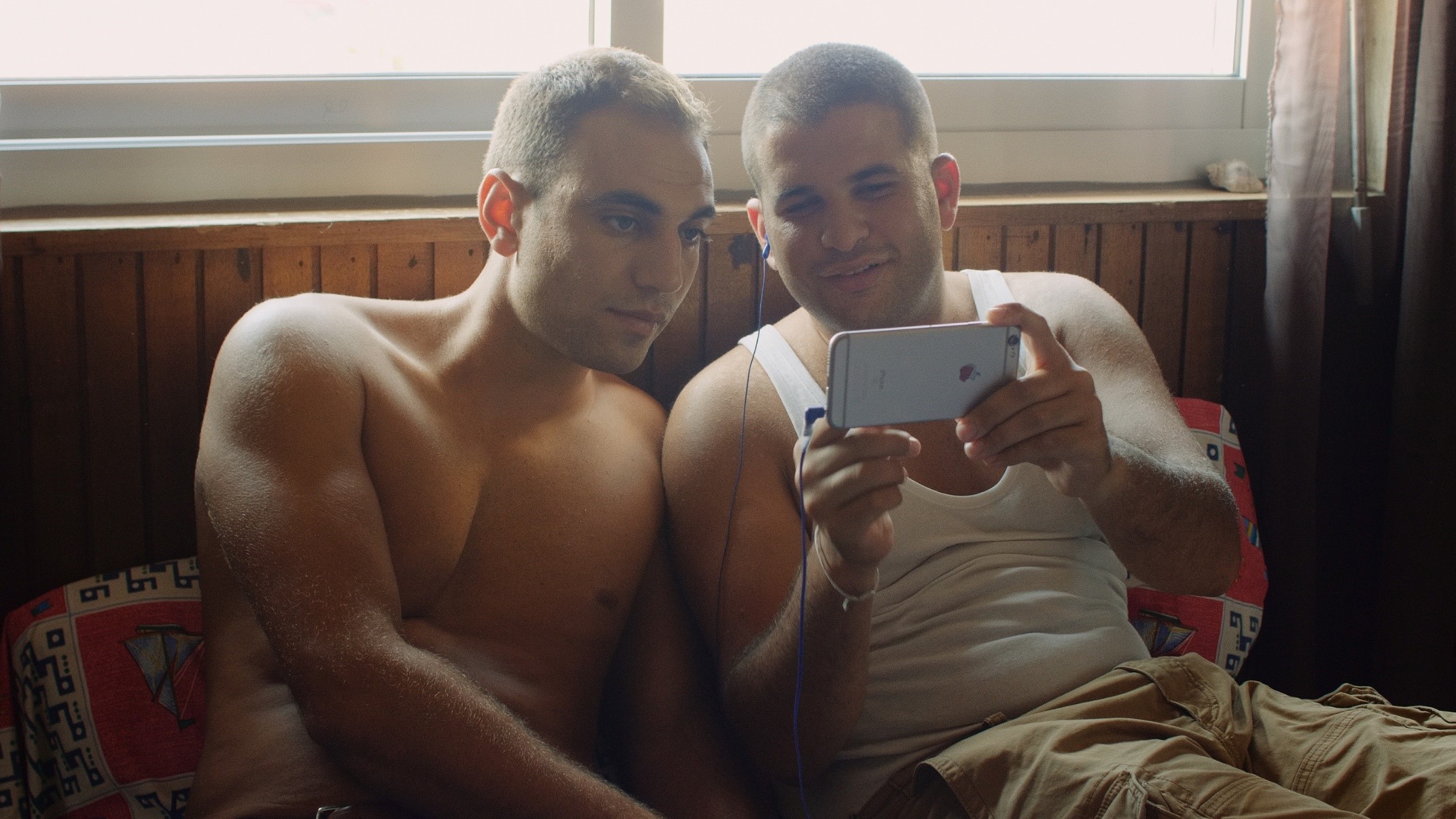
Following a proud fifty-year tradition, the Forum sidebar again brought together a program that critically and artistically reflected on the medium of film. With 17 films, it featured about half of its usual slate, in line with the overall curtailed programing. Given the five-day window for online viewing, I did not get to devote as much time as usual to exploring this section and will have to wait for the Berlinale Summer Special to catch up. Yet one particularly noteworthy discovery was the Argentinean documentary, Que será del verano/What Will Summer Bring, by Ignacio Seroi—though the rubric ‘documentary’ actually deserves a question mark, because viewers will wonder if this story is actually true. According to that story, Seroi visits his girlfriend in southern France in the fall of 2019, where he buys a used camera on Ebay. He then discovers that the camera still contains some recorded footage from his previous owner, Charles, and Seroi requests and receives permission to use it for his film project. Much of that footage appears to be the stuff of typical home video (walking the dogs along a river, a barbeque with friends), but then suddenly Charles is in Yaoundé, Cameroon –and soon enough on flooded dirt roads in the midst of an armed conflict. Using letters from Charles and his own voice-over, Seroi creates a fascinating tale of one man’s most improbable life journey. That adventure, and Seroi’s film itself, can best be described as one of zigzags, as Forum director Cristina Nord has it: “The directions the film takes are astonishing. In the beginning, you’d never guess that, at some point, you’re going to end up in a militarily contested area in Cameroon. We [the selection committee] were charmed by this film’s agility.”[3]
Not as surprising in its narrative structure as Seroi’s film, Betania Capato’s Una escuela en Cerro Hueso/A School in Cerro Hueso, another Argentinean gem, was equally creative in its twisting of both fictional and documentary elements. Again, the focus is on a school, but this time a student stands at the center—six-year-old Ema, who suffers from autism. Seventeen other schools had turned down her parents’ request to enroll her, so they decided to bring her to the one that did, a small provincial school on the banks of the Paraná river in the north of the country. What a fortuitous choice it turns out to be! An homage to patient, empathetic teachers and welcoming and curious pupils, A School in Cerro Hueso also tells the story of a politically, economically and geographically marginalized province of Argentina that is as much in need of recognition and support as little Ema. Only when the credits rolled, which explained that the story was based on the true personal experiences of the director and her son, did I realize that this intimate portrait of autism is the work of child actor Clementina Folmer, whose remarkable performance anchors “a hypnotic and spiritual journey” that helped win the film Special Mention for the Generation Kplus Competition.[4]
Like all films reviewed here, A School in Cerro Hueso really deserves to be seen on a big screen, as well as experienced and discussed by live audiences. Indeed, I felt that particularly the films that are less narrative- and character-driven, or that rely on duration rather than suspense, were more difficult to watch on my laptop than, say, I’m Your Man. As some observers noted, it was obvious that the Competition Jury was able to see the films as a group in a Berlin movie theater, because their awards recognized films that reward, or even depend on, that kind of experience. That said, the online format did have its perks. The Berlinale platform worked perfectly, and watching Hong Sangsoo’s intricate new miniature, Introduction, over early morning coffee on my sofa was immensely gratifying. Treating Herr Bachmann and His Class as a three-part miniseries spread over eight hours of watching did also not diminish Speth’s achievement (even if the director will likely disagree). And if we bear in mind that the original Berlinale dates would have coincided this year with a serious ten-day cold snap in the German capital, not having to rush from one venue to another was not all that bad. And yet—a Berlinale without Berlin is no Berlinale at all, period. And to think that the strongest line-up in years has only been seen by a very small group of people is equally unacceptable. Let us keep our fingers crossed that June will actually bring the hoped-for Summer Special so that the films and their creators receive the warm welcome that they deserve.
Notes
https://www.berlinale.de/en/festival/awards-and-juries/international-jury.html. Accessed March 7, 2021.

Graf’s film is based on the original version of Kästner’s novel, which was only published in 2013. For version published in 1931, the full title of which is Fabian, Geschichte eines Moralisten (Fabian, the story of a moralist), Kästner was forced by his publisher to shorten the manuscript to omit passages considered risqué. That version was adapted for the screen by Wolf Gremm in his 1980 film Fabian, which at the time was very successful in West Germany and became the country’s submission for the Academy Awards that year.

“Forum 2021: On a Zig-Zag Course: Interview with Cristina Nord,” https://www.berlinale.de/en/news-topics/berlinale-topics/interview-forum-2021.html. Accessed March 6, 2021.

https://www.berlinale.de/en/festival/awards-and-juries/awards-generation.html. Accessed March 10, 2021.



